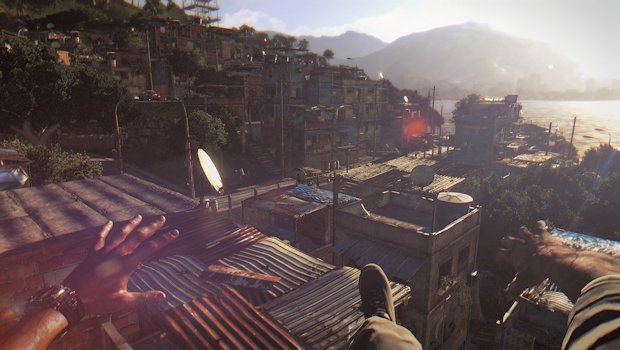I know everyone claims to be over the zombie push in popular media. But film makers, writers, game developers, and other creators of entertainment media keep pushing it down our throats. At least this is what I hear from others. I wouldn’t actually know myself because I am hopelessly addicted to the undead. I devour any and all media on the subject, be it comics, film, television, video games, and anything else I missed. Much of what I consume is mediocre, but I keep at it in anticipation of the truly great stuff.
One of the games I eagerly devoured was Techland’s 2011 title, Dead Island. The story was generic zombie fare, the characters were borderline offensive, and the mechanics weren’t anything to write home about, and it was a technical mess. But still, it was a fun, if highly repetitive, open world zombie survival game. For everything the Polish developer got wrong, by aiming for a high fun factor, they kind of got it all right.
They look to get it right again with their latest release, Dying Light. I sat down with the game on release day and came away with some initial impressions after a few hours of play. Please note that this is not a review (my official review will be coming after I sink more time into the game).
Dying Light kicks off with more narrative than the entirety of Dead Island. It was so narrative-heavy that I felt I might be playing a Metal Gear game. I kid (because nothing is that bad), but it was lengthy enough that I noticed. However, once I had agency of my character, an operative named Kyle Crane, I knew what my mission was, the major players that pertained to that mission, and the dangers that lurked in the city I was infiltrating. The narrative layout for much of the story’s origins are pretty standard genre fare, but Crane’s mission, to breach quarantine and secure a potential cure from within, struck me as something a bit different in the traditional zombie storytelling pantheon.
To complete this mission, Crane needs to work his way towards the leaders of the surviving factions in the city. And here is where the Dead Island DNA comes in. Having played the two Dead Island games, I felt right at home with the control and mission structure of Dying Light. In fact, if I had come into this blind and someone told me it was the next Dead Island game, I’d have believed them. Fighting off zombies, at least in the early going, is still very much a melee affair. Pipes, 2x4s, rebar, wrenches, and anything else you can lay your hands on to swing at a walker will be used. Also carrying over from Dead Island: the ridiculously short lifespan these weapons have in terms of durability. I didn’t like the durability issue in Dead Island and I don’t like it here.
Yet, melee fighting and questing only play a part of Dying Light. What makes the game stand out control-wise from its spiritual predecessors is mobility, in particular speed and climbing. In the few short hours I’ve spent with Dying Light, I’ve quickly realized that fighting off zombies isn’t the smartest way to go about handling things; in fact, when factoring in the poor durability of weapons, avoiding combat by running by it is often the best course of action. And even better, avoiding combat by running and jumping through the city is a ton of fun. It’s not quite Mirror’s Edge with zombies but it is still immensely satisfying to string together jumps and figure out the best path to a destination.
One of the problems with the Dead Island games was that, while fun, they rarely put you in situations where you felt tense. For a horror game, that is a huge shortcoming. Dying Light also fails to put you in these tense situations. In fact due to the mobile escape options, I felt even less tense. That was, to my surprise, until night fell.
The big takeaway from my initial experience with the game was that once it got dark outside, the game took on a whole new flavor. Avoiding even large groups of normal zombies in the daytime is fairly easy and I rarely felt boxed in. But once the sun sets the game changes. Special zombies come out at night, ones which made the speed running zombies of 28 Days Later seem slow and unthreatening. My first, and at this point, only encounter with the nightmare creatures had me running and stumbling in the dark as I tried to get back to a safe zone. It was terrifying. And I loved every second of it.
It is this addition of tension that gives me hope that Dying Light is the game I’ve been waiting for, one of those special pieces of media that sets a new standard for the zombie genre. I have some concerns, mostly in regards to the narrative (I think I already know the twist) and the writing, but so far I’m impressed. Because what I’ve played of Dying Light so far, has been a great deal of fun. We’ll see if it holds up.


